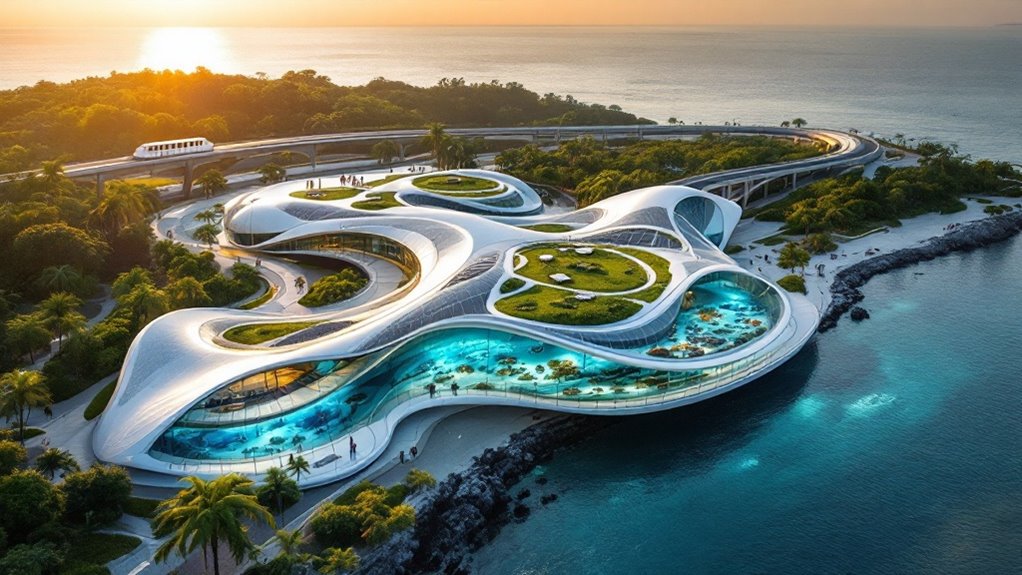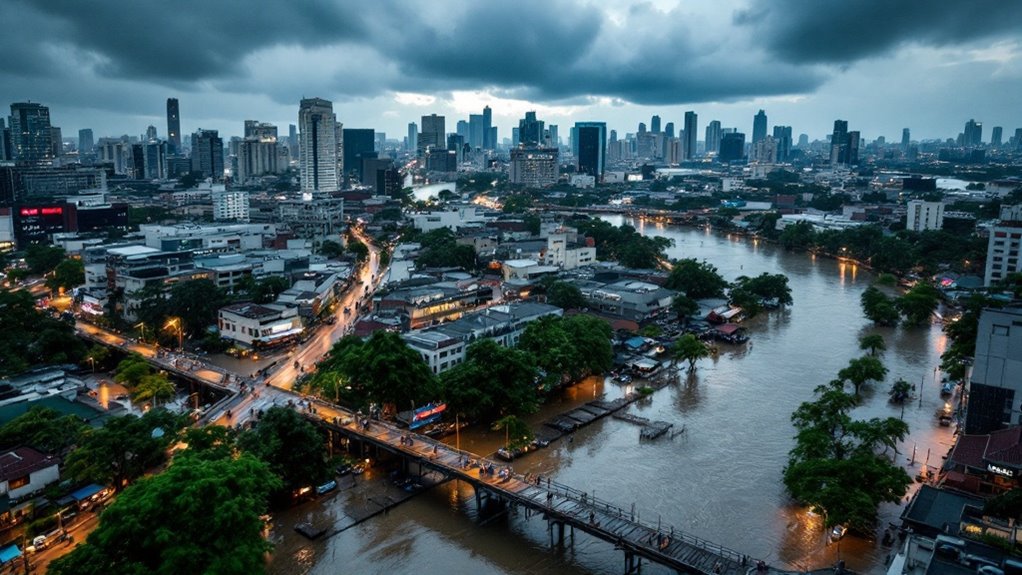Thailand’s radical 2025 tourism overhaul could reshape global travel by prioritizing sustainability, targeting high-value visitors, and integrating green infrastructure into key destinations. The plan aims to generate 3.5 trillion baht in revenue by restoring international arrivals to 39.8 million, while adapting strategies to manage risks from geopolitical instability and natural disasters. Enhanced eco-certification for hotels and new nature-oriented experiences signal a major shift in travel standards. Details on how these strategic changes may affect future tourism follow.
As Thailand aims to revitalize its tourism sector in 2025, government officials have introduced an ambitious overhaul designed to generate 3.5 trillion baht in tourism revenue, with 2.32 trillion baht expected from international visitors and 1.17 trillion baht from domestic travel. This revenue target seeks to match the nation’s 2019 record of 39.8 million international arrivals by leveraging both long-haul and regional markets. With over 11.35 million visitors welcomed from January 1 to April 21, 2025, Thailand is already seeing robust growth in international arrivals for the year.
The plan’s success, however, is not guaranteed. Recent challenges, such as geopolitical instability and natural events like the Myanmar earthquake, have introduced risks that could affect visitor numbers and spending patterns. As a result of the recent earthquake in Myanmar, confidence in Thailand’s tourism sector has been negatively impacted, prompting authorities to reassess their strategies.
In response, the Thai government, under the direction of the Prime Minister, has called for a thorough reevaluation of tourism strategies. The central focus is a shift toward sustainable and eco-conscious travel. New initiatives prioritize green infrastructure, pollution reduction, and responsible travel behavior, aligning Thailand’s tourism growth with global environmental standards.
Efforts to certify hotels based on sustainability criteria and expand nature-based tourism options demonstrate the country’s commitment to integrating economic growth with environmental stewardship.
Targeting high-value travelers is another cornerstone of the 2025 strategy. By aiming to attract visitors who spend more and stay longer, Thailand seeks to increase tourism’s overall economic impact. Data from early 2025 already show promise, with over 11.35 million long-haul visitors between January and April.
The emphasis on unique experiences, coupled with investments in sustainable infrastructure, is intended to enhance Thailand’s competitiveness on the global tourism stage and set new benchmarks for responsible travel in Asia.
The Thailand Tourism Forum 2025 reflected these priorities, revealing a five-pronged strategy to foster high-value and sustainable tourism. Stakeholders from various sectors participated in reimagining the value of responsible tourism and exploring new investment opportunities.
While the sector remains a vital source of jobs and economic growth, achieving these ambitious goals depends on successfully managing ongoing risks, including geopolitical events and shifting global travel trends. If successful, Thailand’s overhaul could serve as a model for balancing economic goals with sustainability in the international tourism industry.








